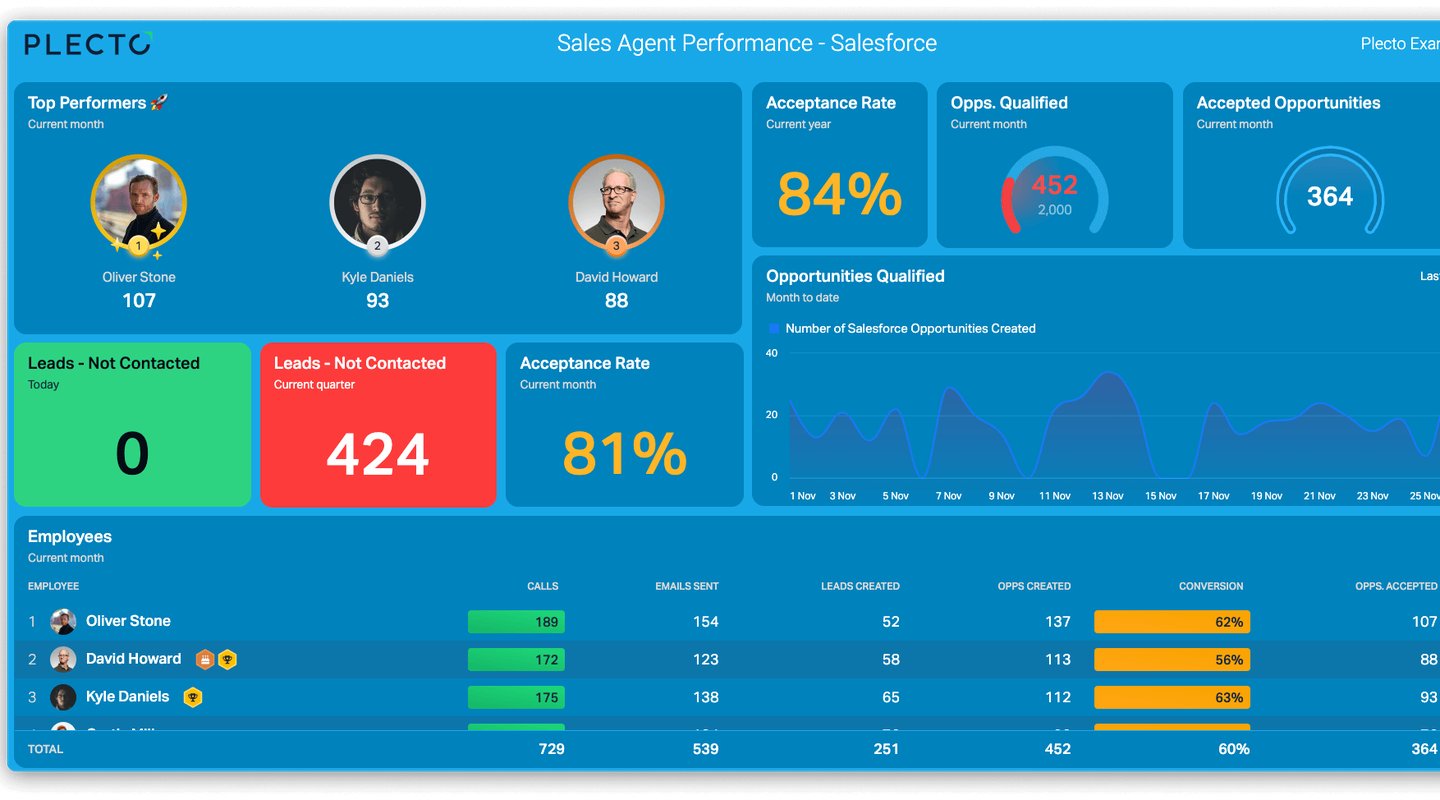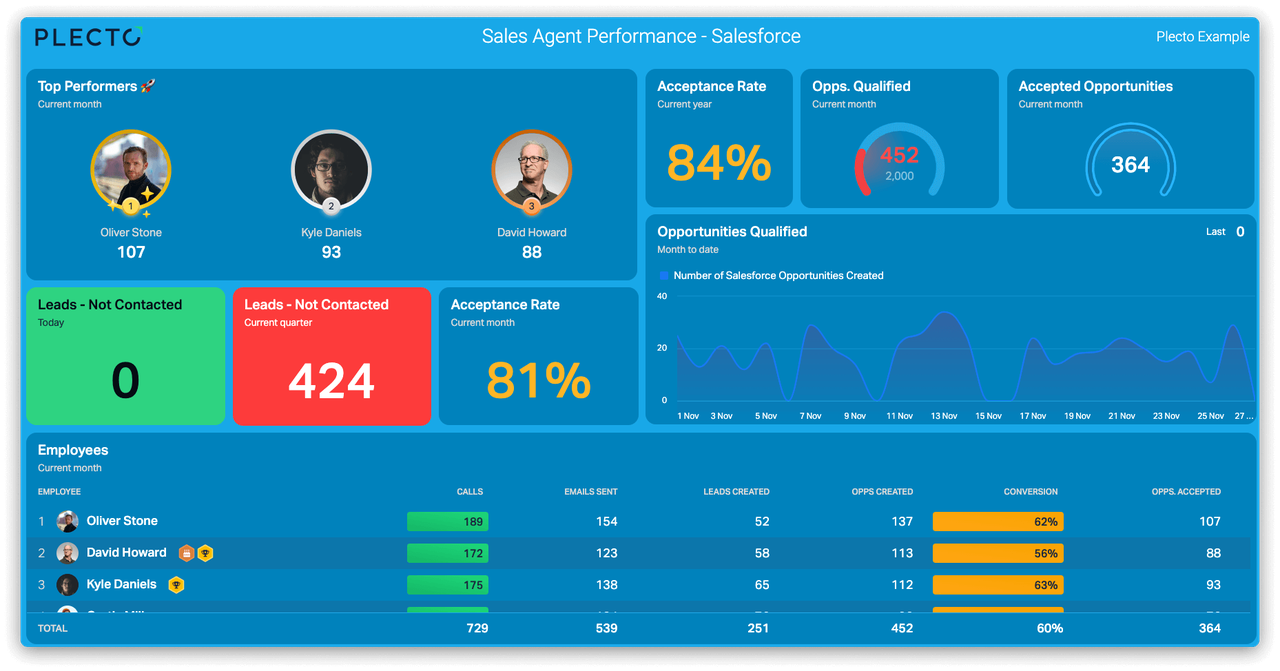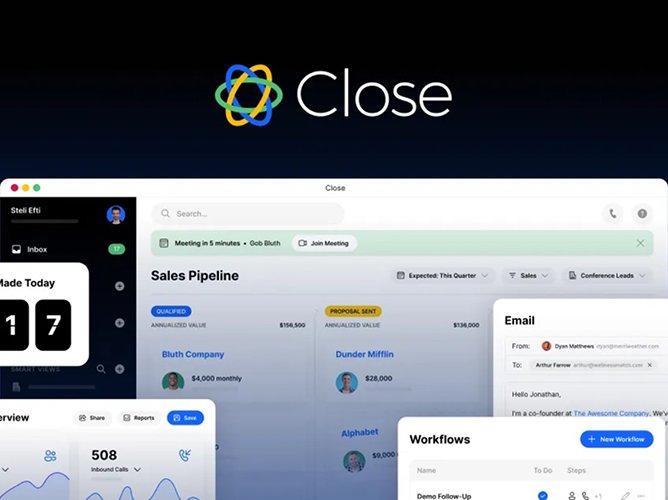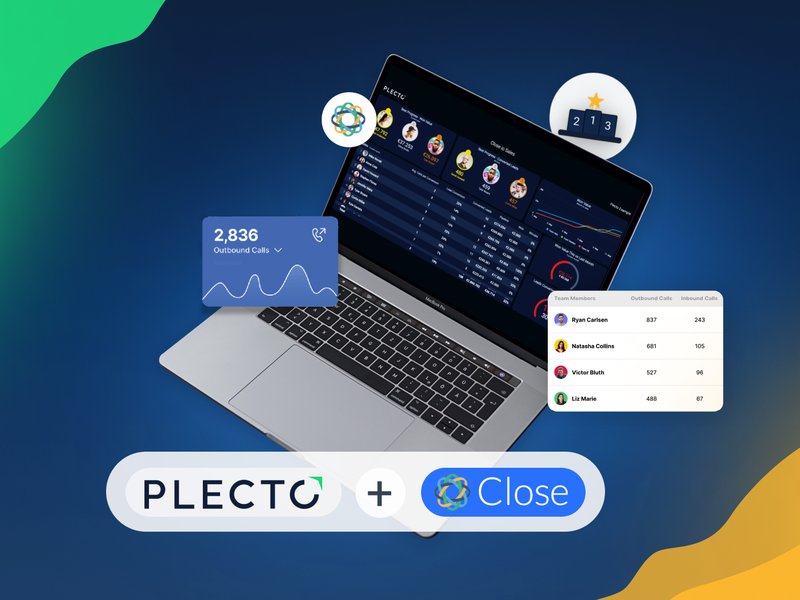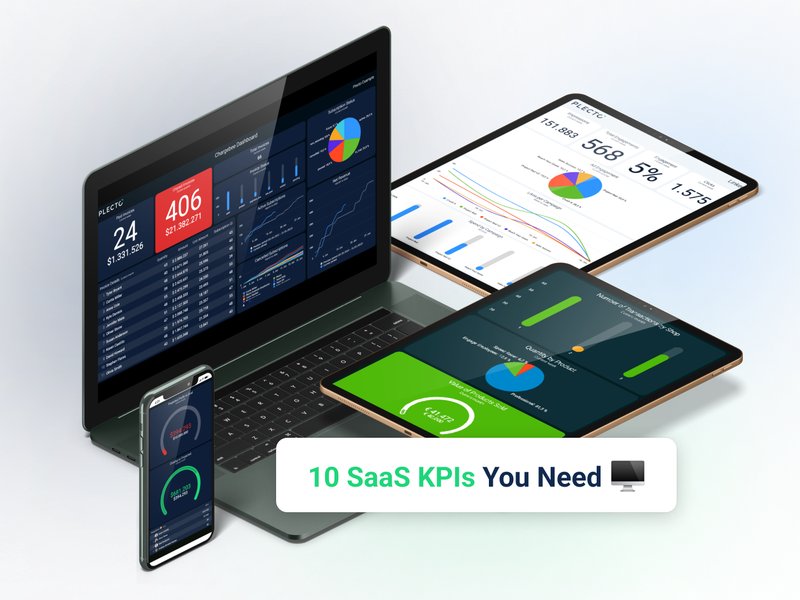Salesforce helps companies improve the efficiency with which they plan and optimize their sales processes and manage customer relationships. To get the most out of this SaaS CRM tool, many sales leaders choose to track KPIs that measure their team’s activities and performance in Salesforce – in other words, Salesforce KPIs. Choosing the right KPIs enables sales teams to better monitor and analyze the efficiency of their sales process, prioritize the right activities at the right times, and focus their resources where they’re most likely to bear fruit.
The following ten Salesforce KPIs are a solid starting point for sales departments wanting to get the most out of their Salesforce data.
10 Important Salesforce KPIs
We’ve chosen these ten actionable Salesforce KPIs because they cover the entire sales process and provide the best vantage point for monitoring, analyzing, and refining sales activities to help sales teams direct their time and attention where it matters most.
1. Lead Response Time
Every sale begins with a lead, so it’s important to take a close look at how your team handles this important top-of-funnel resource. 30–50% of sales go to the vendor who responds first, so this KPI directly impacts your sales revenue. Knowing the average time it takes respond to an inbound lead should be your first step to optimizing your sales process. While it’s important to follow up quickly, it’s equally important that you don’t tie up resources chasing the wrong leads. All leads are not created equal – someone requesting a demo is generally a higher-value lead than someone who requests an ebook or posts a comment on a social media post. Benchmarking can improve the value of this KPI by helping to identify which source generates the most conversions and which follow-up strategy is most effective in moving leads through the pipeline, which can also help to fine-tune how you qualify leads.
2. Follow-Up Contact Rate
This Salesforce KPI goes hand-in-hand with lead response time. It measures the average number of follow-up attempts that are made per lead before the lead converts or goes cold. Segmenting this KPI by follow-up method (e.g., email, phone call) and lead source can give further insight into the most effective tactics and best source(s) of leads. It can also show whether some of your team’s tactics are a little overzealous, turning prospects off. Tracking this KPI over time can help determine best practices to help your team strike the right balance of persistence and knowing when to let a prospect go.
Build your first dashboard.
Start your 14-day free trial today
3. Average Sales Cycle Length
When it comes to shortening the sales cycle, it’s essential to understand how long prospects are spending at each stage. To get the most out of this Salesforce KPI, break your sales cycle into stages – these can vary in length and number between companies, but they usually consist of at least four stages (e.g., opportunity, proposal, negotiation, closing), each lasting from weeks to months. Once you’ve identified where your prospects are spending the most time, you can look into ways to optimize the process. If your company sells multiple products, it could be useful to segment this KPI by product or order size to identify trends. If the average sales cycle length and revenue varies greatly between reps, it could be helpful to drill down and look at this KPI per rep to see what you can glean from the top performers.
4. Sales Activities
This Salesforce KPI tracks how reps are spending their time, and it’s one of the best ways to ascertain whether they’re working smart or working hard. Tracking sales activities can shed light on which activities yield the best return on effort, and identify reps who aren’t using their time to their best advantage. Correlating this KPI to deal-related data can help sales leaders to see which activities lead to the most revenue, and identify opportunities to streamline processes. For example, if top-selling reps are using a disproportionate amount of time preparing for meetings, introducing a sales enablement program could be a wise investment – or if certain reps are spending a lot of time on lead generation without hitting their targets, maybe they need more training or could benefit from the mentorship of a more experienced sales rep.
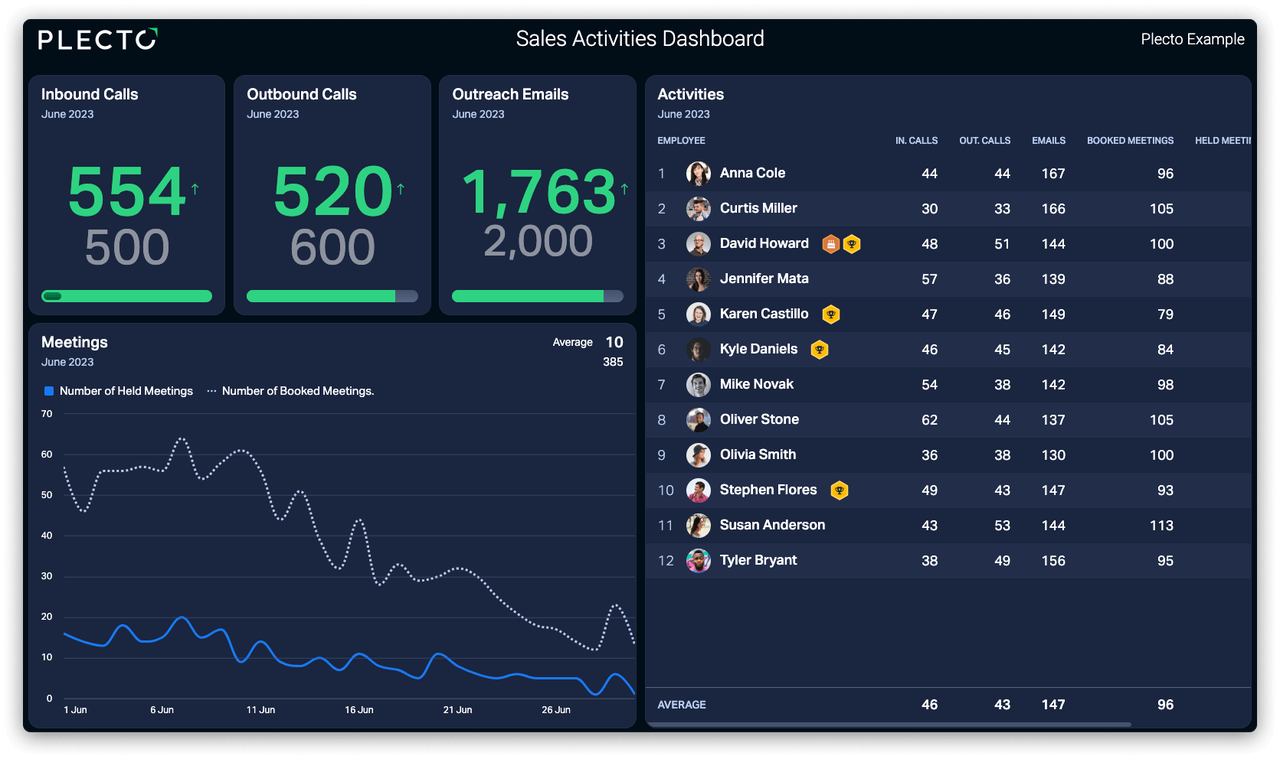
5. Number of Outbound Calls/Contact Rate
Cold calling is universally regarded as one of sales reps’ least-enjoyable tasks, and this KPI duo is designed to help improve return on effort around this much-dreaded task. It tracks the number of outbound calls made and how many of those calls resulted in a conversation with a lead. Comparing these two metrics can help sales teams identify trends around the best days and times to focus on cold calling. Looking at this KPI per rep can show who has the most effective lead-generation tactics, which can help in documenting best practices. Setting targets around the number of outbound calls that should be made daily, weekly, and monthly can also help to ensure that everyone on the team is pulling their weight.
6. Email Open Rate
Thanks to caller ID, people are less likely than in the past to answer calls from an unknown number. Because of this, a lot of sales teams are turning to emails as a primary tactic for reaching new prospects. “Email open rate” is the new “cold call contact rate” – it measures how many of your emails were opened by the recipient, and it’s useful information for identifying the most effective types of messaging for engaging certain segments. This KPI could also result in a beneficial collaboration with the marketing department to fine-tune your messaging.

7. Number of Demos Booked
Booking a demo is often an initial goal of top-of-funnel activities like cold calling and emailing because it can be the first significant step along the path from prospect to paying customer. When it comes to moving prospects through the pipeline, cold calling is rarely a “one-and-done” activity. It takes time to build rapport, and tracking this metric against the average number of outbound follow-up calls it takes to book a demo can help in goal-setting around call targets – and help keep reps motivated and grounded in reality. If your department also handles inbound leads from the company’s website and social media platforms, this metric can also help identify which content or messaging is most effective in attracting qualified leads.
8. Lead Conversion Ratio
Outbound sales, particularly cold calling, is the bread and butter of many sales departments. While it’s largely a numbers game, this Salesforce KPI can help you identify how many new leads must be generated in order to close one new deal. It’s an important KPI for helping to set the right targets for sales activities and outbound calls because, together with contact rate, it can give insight into how many cold calls must be made in order to generate enough leads to hit your sales goals.
9. Open Pipeline Value
In a target-driven field like sales, it’s essential to know where you stand at all times. This Salesforce KPI gives an overview of the value of deals in every stage of your pipeline. Knowing how much revenue is sitting in each stage of your pipeline can help you to accurately predict whether you’re on track to meet your short- and long-term sales goals. It can also help you to nip trouble in the bud by identifying early on if any stage of your pipeline is underperforming, so you have time to correct course before it’s too late.
10. Pipeline Value Forecast
Knowing your open pipeline value is useful, but it doesn’t tell the whole story. This Salesforce KPI provides additional context and insight by using historical sales data to predict your pipeline’s future performance. By looking at the average open pipeline value for the same period in years past and combining it with committed deals and upcoming renewals, you can better predict best- and worst-case scenarios for the current timeframe.
Get the most out of your Salesforce KPIs!
These ten Salesforce KPIs are a great “starter set” to give you actionable insights into metrics that can make a big difference in your sales performance. But to really drive performance, you have to actively track your KPIs. That’s why many successful data-driven companies visualize and share their KPI data on dashboards.
Plecto has a state-of-the-art integration with Salesforce, offering endless options for customizing your KPI dashboards and data visualization in a way that makes the most sense for you and your team. With Plecto, you can centralize all of your Salesforce data onto one screen – and you can even cross-combine your Salesforce data with other systems on the same screen. We’ve even created ten basic formulas to help get you started with your Salesforce KPIs dashboard.
Plecto also includes built-in gamification and performance-boosting features like leaderboards, contests, and instant notifications to spark friendly competition and add an element of fun to your reps’ most tedious sales activities.
Sign up for a free 14-day trial and see how easy it is to visualize and track your Salesforce KPIs and related data all in one place!
